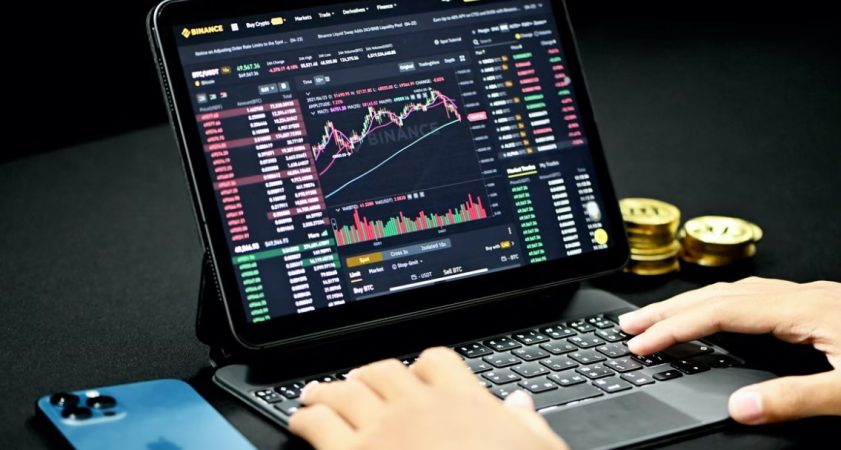
Introduction
If you follow cryptocurrencies at all, you’ve probably heard of coin burning, a way of reducing a coin’s supply that gained popularity in 2017. It has been duplicated almost endlessly since then, as thew process is common in cryptocurrency.
There have been reports about developers burning millions, billions, or even trillions of tokens using both huge and tiny coins. You’ll understand exactly what crypto burning is and why developers do it in this article.
- Top 5 Crypto Performers: BTC, EOS, ETH, TRX, NRG
- What is the Debate about Bitcoin Investment Safety?
What Is Coin Burning?
When a cryptocurrency token is given to a useless wallet address, it is burnt and removed from circulation. The address is known as a burn address or eater address since no one can access or assign it. A token is permanently lost when it is sent to a burn address.
Anyone with a cryptocurrency can burn it, but it’s not something you’d want to do on the spur of the moment since you’d be effectively throwing money away.
Most of the time, it is the cryptocurrency’s creators that select how much to burn. Burning coins decreases the supply, making cryptocurrency tokens rare. Because of the shortage, prices may rise, benefiting investors.
When it comes to currency burning, there are a few things to keep in mind. It does not guarantee that the cryptocurrency’s value will rise. In fact, many individuals feel it is of little or no worth.
The use of a cryptocurrency coin burn to mislead investors is possible. Developers can say they’re burning tokens when they’re actually sending them to a wallet they control. To avoid this, conduct your research on the cryptocurrency you’re considering investing in, or stick to safer cryptocurrency stocks.
Developers also utilize burning tokens to hide whales that control large quantities of a cryptocurrency. Assume a developer creates a cryptocurrency with one billion tokens, keeps 100 million, and burns immediately 600 million. Because the initial supply was 1 billion, it will appear that the creator-owned 10% of the supply. However, the developer actually owns 25% of the remaining 400 million tokens, which is obviously a considerably higher amount.
How Did Coin Burning Begin?
Coin burning is an old concept that predates cryptocurrencies. Stock buybacks are comparable to, and presumably inspired by, this strategy.
A stock buyback occurs when the company that issued the stock buys back shares at market price and absorbs them, lowering the total number of shares on the market. While buybacks and coin burning aren’t the same things, they’re both comparable concepts with similar purposes.
In 2017 and 2018, many cryptocurrencies, including Binance Coin (CRYPTO:BNB), Bitcoin Cash (CRYPTO:BCH), polkadot coin and Stellar (CRYPTO:XLM), burnt tokens to reduce supply and raise prices. It’s becoming more typical in recent years with emerging cryptocurrencies that start with a large token supply.
Coin burning has recently gained popularity since it allows cryptocurrencies to begin at low prices and then artificially boost their worth once people have invested. Because of the low price, a new cryptocurrency might begin with 1 trillion tokens for a fraction of a penny and attract investors. Later, the creators can raise the price by burning billions of tokens.
What Coins Are Able To Be Burned?
It is possible to burn any cryptocurrency. All cryptocurrencies may be delivered to a burn address, allowing for the burning of cryptocurrency using any of them.
Here are a few famous digital currency tokens that have been burnt, as well as the circumstances that led up to them:
- Binance, a cryptocurrency exchange, began burning its Binance Coin quarterly in 2017. The exchange has pledged to continue doing so until half of the total Binance Coin supply has been destroyed. Surely it is better to consider buying Binance USD than burning it.
- In 2019, the Stellar Development Foundation (SDF) burned over half of the Stellar supply (55 billion XLM coins).
- In 2021, the developers of Shiba Inu (CRYPTO:SHIB) handed half of the supply to Vitalik Buterin, co-founder of Ethereum (CRYPTO:ETH), in a probable attempt to get attention. He instantly burnt 90% of the tokens and gave the remainder away.
What Is Proof Of Burn?
A consensus algorithm for confirming and adding transactions to blockchains is known as proof of burn. Its purpose is to prevent fraud and guarantee that only legitimate transactions are processed.
A blockchain is a public ledger of a cryptocurrency’s transactions, and its consensus algorithm determines how transactions are confirmed. Proof of work and proof of stake are the two most prevalent consensus algorithms; proof of burn is a recent alternative.
Crypto miners must burn their own tokens to acquire the ability to mine fresh blocks of transactions using proof of burn. They may mine more tokens the more tokens they burn. Participants receive prizes in the cryptocurrency they are mining in exchange for their participation.
Some proof-of-burn cryptocurrencies require miners to burn the same currency they are mining. Others permit miners to burn several types of currencies.
Proof of burn has the benefit of being a fast way to validate transactions without the energy needs of the proof-of-work model.
Conclusion
Burning cryptocurrency tokens eliminates them from circulation. It can be advantageous to the cryptocurrency or backfire, depending on investor and user attitudes and how fresh supply and demand dynamics impact prices, similar to corporate stock buybacks.

Taylor is a freelance SEO copywriter and blogger. His areas of expertise include technology, pop culture, and marketing.











